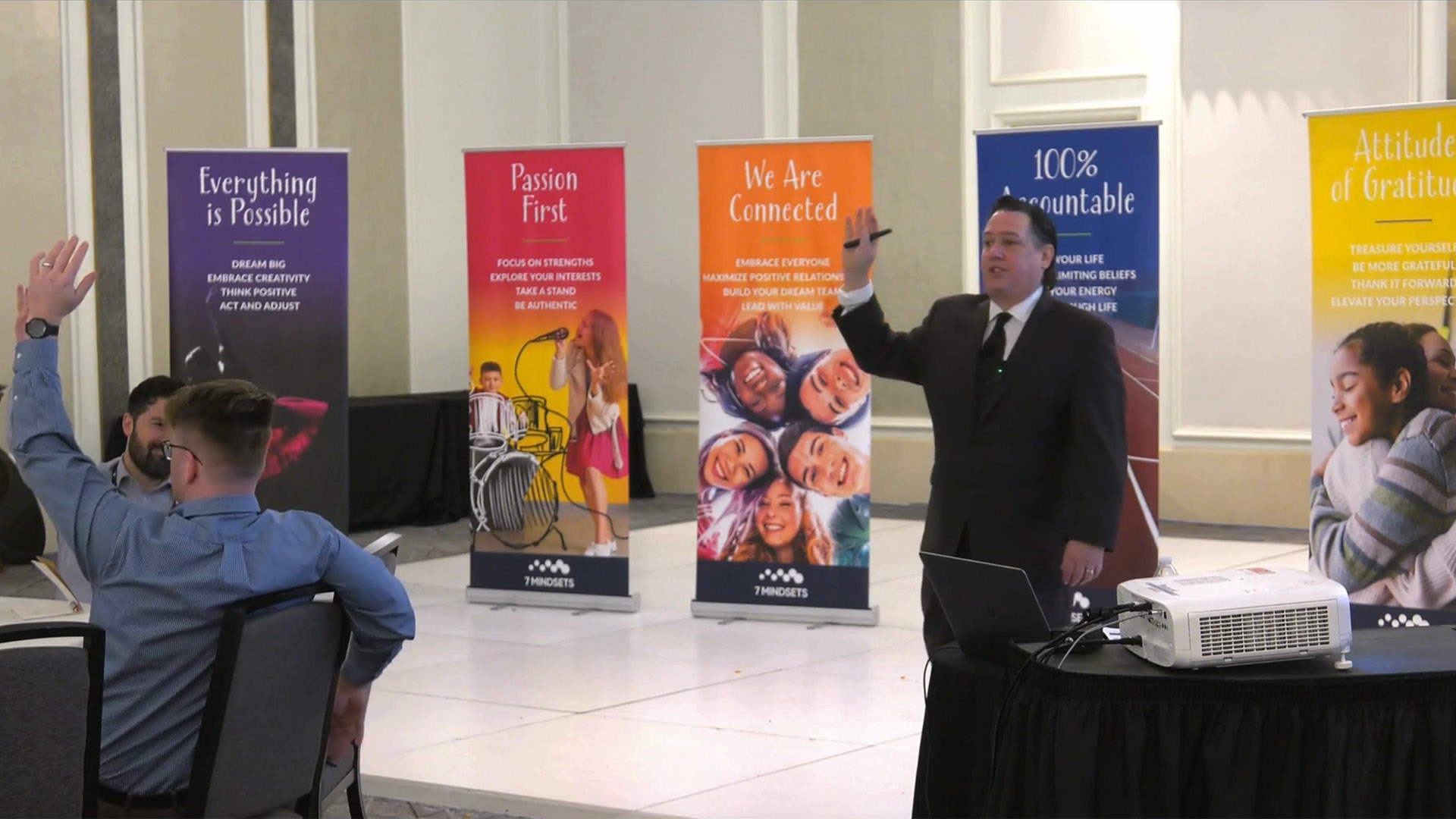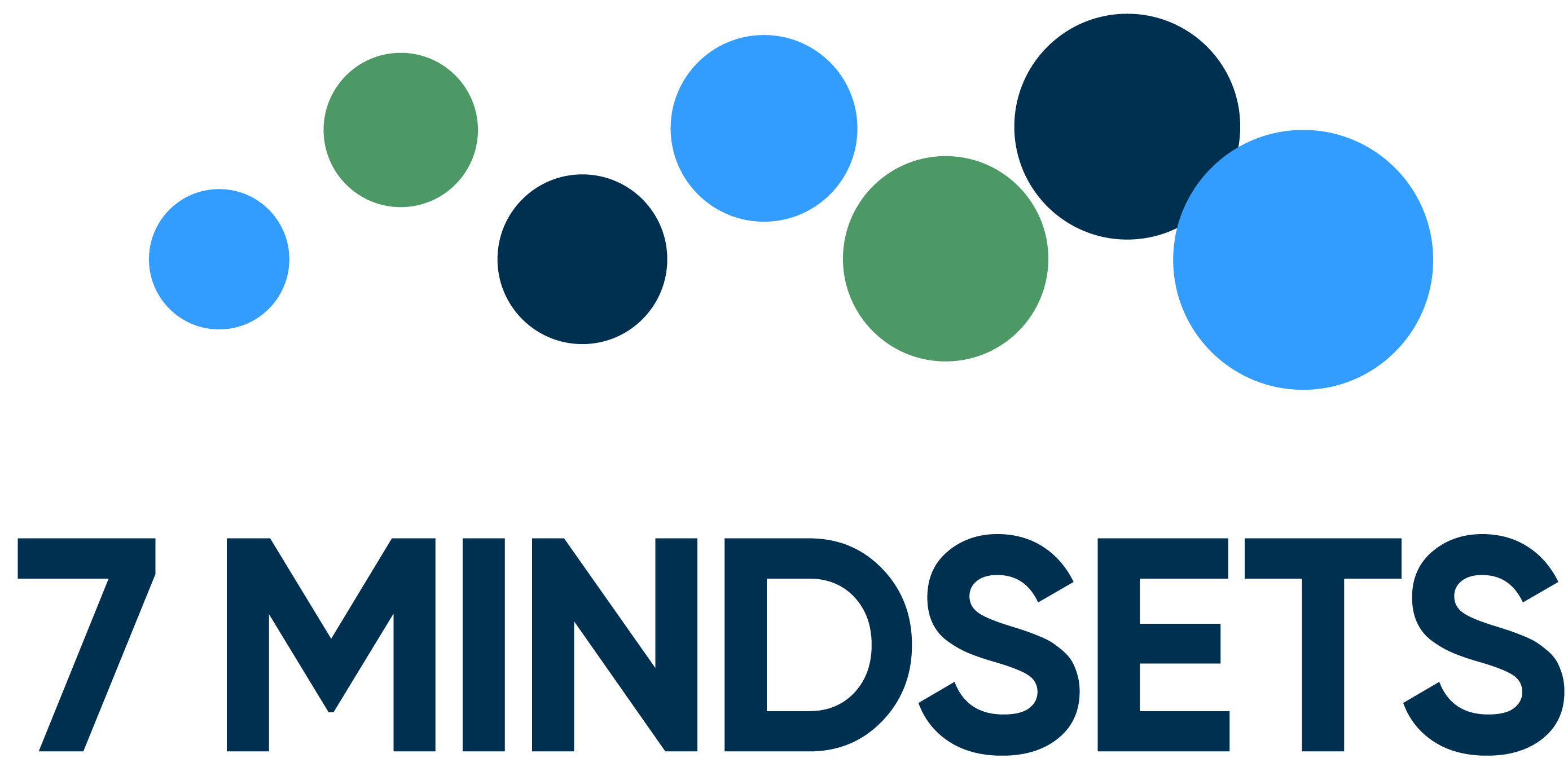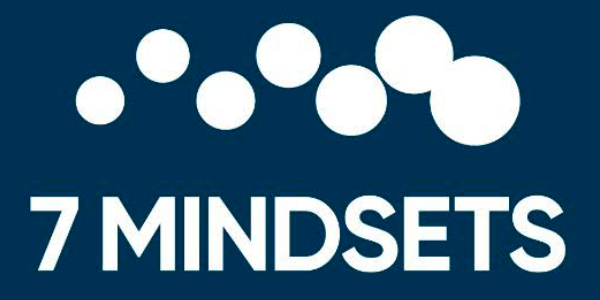In today’s rapidly changing world, educators face a critical and complex challenge: How do we prepare students for jobs that don’t yet exist, for a future we can’t predict, and for lives shaped by constant transformation? One key lies in initiating a mindset shift—a reimagining of how we think, teach, and lead during times of uncertainty.
In a recent keynote, 7 Mindsets CEO Scott Shickler posed that exact question. He invited educators to envision a metaphorical magic wand—a symbol of each person’s innate power to dream big, take action, and create real change. He challenged his audience to consider what they would transform: academic performance, behavioral issues, student attendance, teacher burnout, community violence, and more.

“What if,” he asked, “you could wave this wand and walk out of this room having experienced a positive life-changing moment—for yourself and the young people you serve?”
That’s the power of a mindset shift in education. Here’s how it’s changing the game.
1. The Science Behind the Mindsets
7 Mindsets is grounded in 20 years of research and practice, including a 3-year meta-analysis of what drives human happiness and success. The conclusion: success isn’t rooted in what people know, or even the skills they acquire throughout their life, but rather, in how they think – their mindsets. In particular, the most thriving individuals across the globe share 7 Mindsets.
The 7 Mindsets—such as Everything is Possible, We Are Connected, Attitude of Gratitude, and 100% Accountable—help individuals develop critical traits including optimism, accountability, connection, self-efficacy, grit, and purpose. These aren’t just feel-good ideas—they’re transformational beliefs that fuel a real mindset shift in how students view themselves and the world.
2. Identifying and Replacing Counter Mindsets
“Automatic Negative Thoughts” (ANTs) or “counter mindsets” are deep-seated negative beliefs that are often hidden in common euphemisms like “money doesn’t grow on trees,” “curiosity killed the cat” or “don’t make the same mistake twice” that subconsciously and unintentionally limit students’ beliefs in their own potential.
Research shows students can experience up to 50,000 negative thoughts per day, leading to perceptions of scarcity, fear, and limitation. By teaching students how to flip the switch, educators initiate a mindset shift—replacing these negative patterns with positive, constructive beliefs.
This is not just theoretical. It’s fast. It’s deeply felt. And it has a measurable impact on students and educators alike.
3. Illuminate, Educate, Activate: A Model for Real Change
Mindset evolution happens through a three-phase framework:
- Illuminate: Expose the limiting beliefs and unconscious patterns holding students back.
- Educate: Teach positive, empowering mindsets through structured lessons and relatable stories.
- Activate: Put learning into motion with daily habits, authentic connections, and goal-driven action.
This model supports a lasting mindset shift in education, and it lies at the heart of the 7 Mindsets digital curriculum, professional learning, and educator coaching experiences.
4. The Power of Connection and Community
The mindset We Are Connected teaches students and educators that meaningful relationships are essential to well-being. Whether in Atlanta, Peoria, or Decatur, schools implementing 7 Mindsets report higher levels of trust, belonging, and collaboration among students and staff.
As one leader from Peoria Public Schools noted: “The common language of the mindsets helped us reduce aggressive behaviors and unify our diverse school communities.” Fostering relationships through mindset shift also combats isolation, improving both student engagement and educator morale.
5. Real Results, Real Impact
7 Mindsets doesn’t just promise transformation—it delivers it. Consider these outcomes:
- 67% reduction in referrals
- 40% drop in in-school suspensions
- 94% of teachers report improved classroom behavior
- 77% of students apply what they’ve learned in their daily lives
The data from schools using 7 Mindsets also shows a positive trend for attendance and academics: higher student attendance rates and academic gains in English and Math. These results are replicated across the country and underscore the effectiveness of a schoolwide mindset shift supported by ongoing coaching, data, and the Insights measurement tools.
6. Elevating Educators Along the Way
“If we want our students to be their best, we have to start by helping educators be at their best.” Educators are under enormous stress, and their well-being cannot be an afterthought. Through professional learning that uplifts, supports, and inspires, 7 Mindsets helps educators flip the switch—from burnout to breakthroughs, from surviving to thriving.
By focusing on positivity, connection, and purpose, a mindset shift among educators becomes the catalyst for healthier classrooms and stronger communities.
Conclusion: A Movement Rooted in Possibility
At its core, the mindset shift in education is about more than learning—it’s about hope. It’s about reshaping how students see themselves and how schools support their growth. By embracing mindset-based learning, we ignite the potential of every learner, every educator, and every community.
Because when we change the way people think … we change what they believe is possible.



